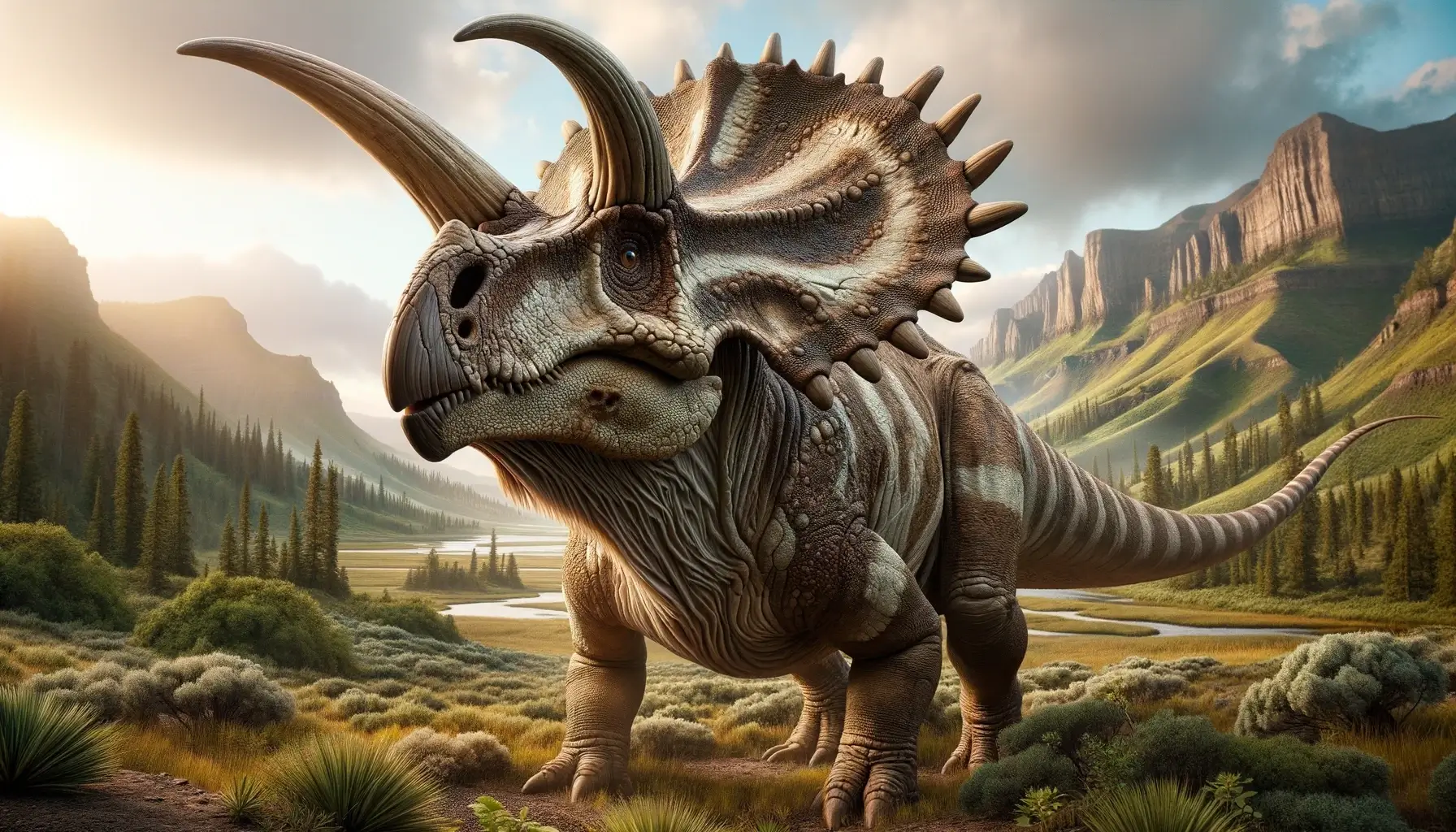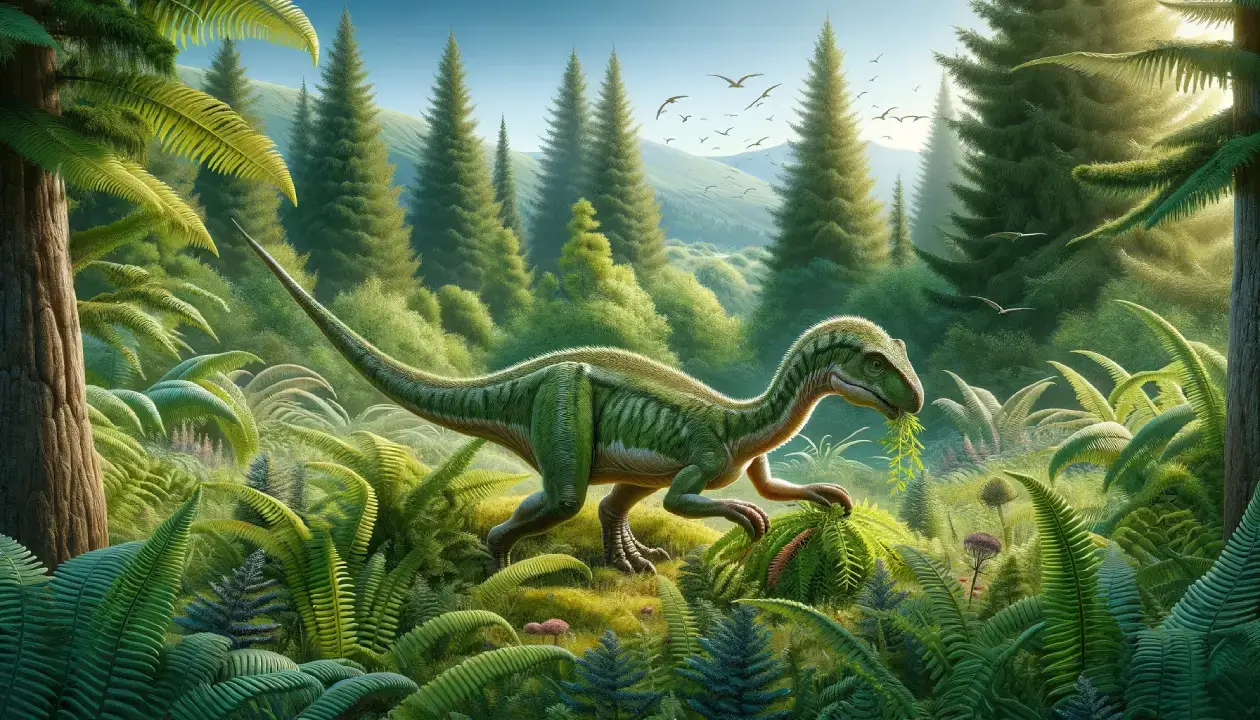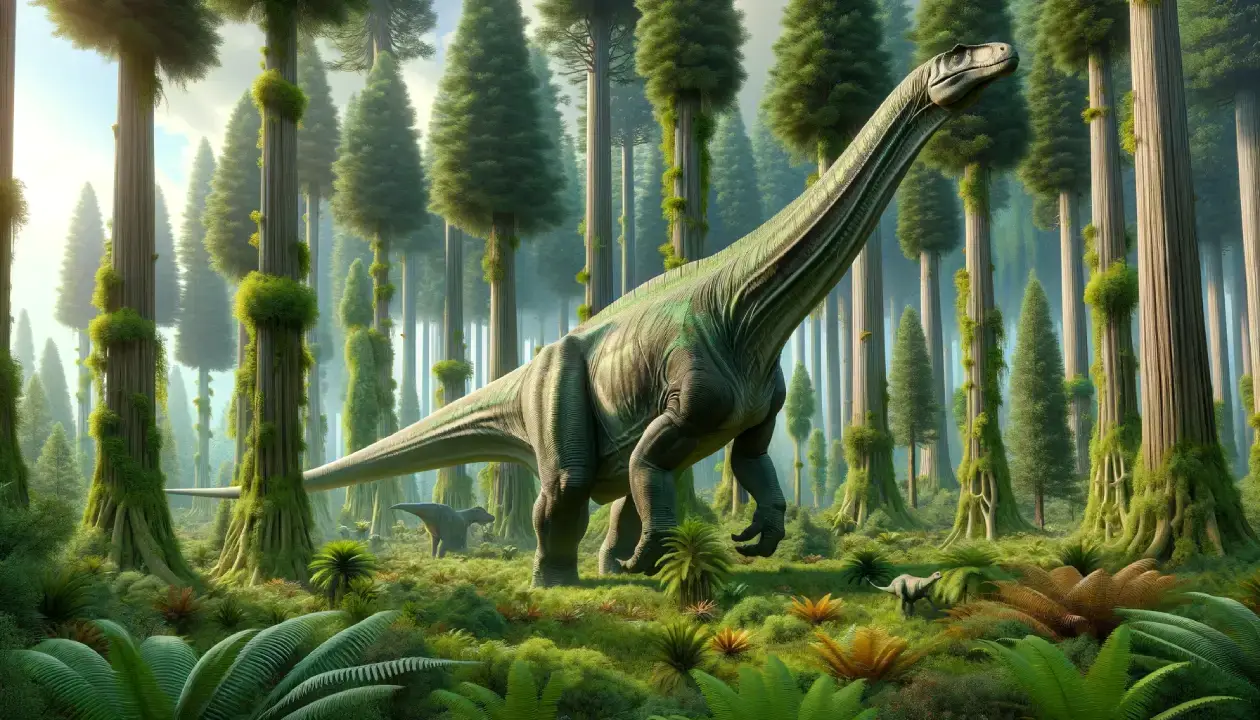Achelousaurus was a unique ceratopsian dinosaur that lived in what is now Montana, USA, during the Late Cretaceous period, about 74 million years ago. It was named after the Greek river god Achelous, who could change his shape and had horns on his head. It had a large skull with a pair of curved spikes on its neck frill and thick bosses (bumps) on its snout and above its eyes. It was related to the famous Triceratops, but had no horns on its face.
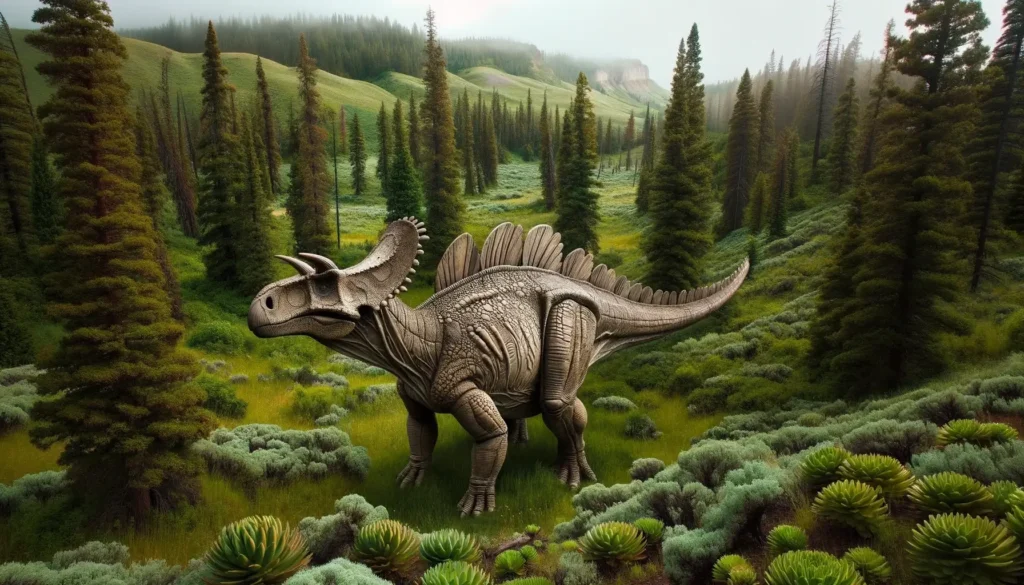
Basic Information
| Feature | Details |
| Time Period | Late Cretaceous (83.6-66 million years ago) |
| Diet | Herbivore |
| Length | About 6 meters (20 feet) |
| Weight | About 3,000 kilograms (6,600 pounds) |
| Size | Medium |
| Posture | Quadrupedal |
| Locations | USA (Montana) |
| Continent | North America |
| Type | Ceratopsian |
| Habitats | Ridge |
Description of Achelousaurus
Historical Context
Achelousaurus was first discovered in 1987 by a team led by Jack Horner, who also named and described it in 1994. The fossils of Achelousaurus were found in the Two Medicine Formation, a rock layer in Montana, which gives the dinosaur its name. Achelousaurus is known from three complete skulls and some fragments of the skeleton. The specific name, A. horneri, honors Jack Horner, an influential American paleontologist famous for his Montana dinosaur discoveries. The generic name Achelousaurus is a complex reference to Greek mythology. Achelous, an important Greek river deity, had one of his horns torn off by Hercules, in a mythological fight with the legendary hero.
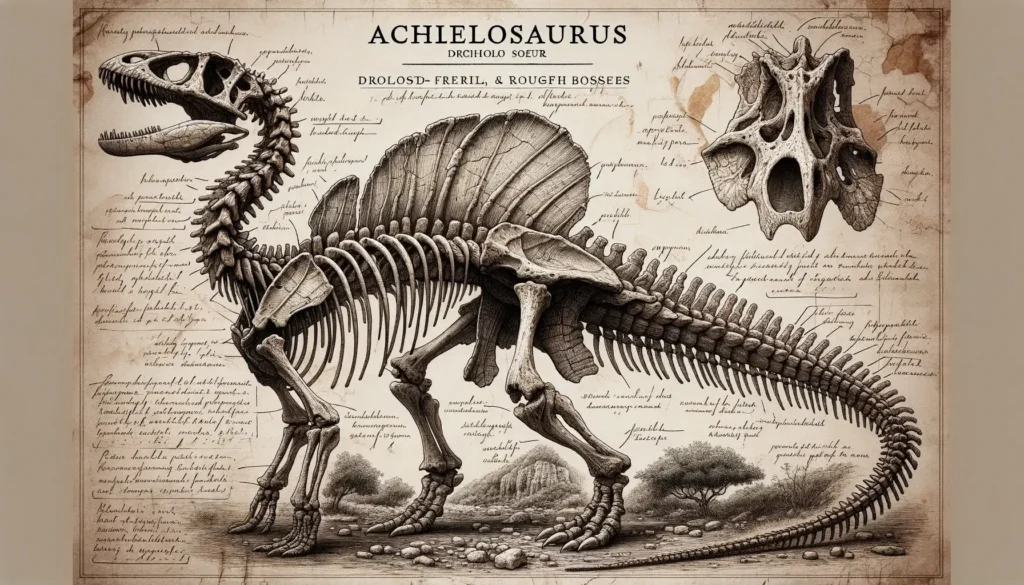
Physical Attributes
Achelousaurus was a medium-sized ceratopsian, a group of horned, plant-eating dinosaurs that includes some of the most famous dinosaurs, such as Triceratops and Styracosaurus. However, compared to other ceratopsians, Achelousaurus had some unique features. Its skull was about 1.6 meters (5 feet) long, with a short snout and a large frill that extended behind its head. Its teeth were spoon-shaped and adapted for cropping low-growing vegetation. On its nose and above its eyes, it had rough bosses (roundish protuberances) instead of horns. These bosses were covered by a thick layer of keratin, but their exact shape in life is uncertain. Some researchers hypothesize that the bosses were used in fights, with the animals butting each other’s heads, as well as for display. On its frill, it had two long spikes that projected outwards and downwards. These spikes were about 60 centimeters (2 feet) long and may have been used for defense or display.
Feeding Habits
As a herbivore, Achelousaurus fed on plants, mainly ferns, cycads, conifers, and ginkgoes that grew in the ridge habitat of North America during the Late Cretaceous. Unlike some other ceratopsians that could reach high branches with their long horns or frills, Achelousaurus probably browsed on plants that were closer to the ground. It may have used its strong neck muscles to pull down branches or strip leaves from stems. It is possible that Achelousaurus swallowed stones (gastroliths) to help grind up the plant material in its stomach.
Unique Features
The most distinctive feature of Achelousaurus was the combination of bosses and spikes on its skull. Bosses are rare among ceratopsians, and only a few other genera have them, such as Pachyrhinosaurus and Einiosaurus. Spikes are more common among ceratopsians, especially those belonging to the subgroup Centrosaurinae, which includes Achelousaurus. The function of these structures is still a matter of debate among scientists. Some possible explanations are:
- The bosses and spikes were used for display or combat with other members of the same species or different species. The bosses and spikes could have been used to signal status or mood, attract mates or intimidate rivals, or fight for territory or resources.
- The bosses and spikes were used for defense against predators or parasites. The bosses and spikes could have been used to fend off attacks from carnivorous dinosaurs or biting insects.
- The bosses and spikes were used for thermoregulation (controlling body temperature). The bosses and spikes could have been used to dissipate heat or retain heat depending on the environmental conditions.
Movement and Speed
Achelousaurus was a quadrupedal dinosaur, meaning it walked on all four legs. It had short but powerful limbs that supported its heavy body. Its front legs were slightly shorter than its hind legs, giving it a sloping posture. Its feet had five toes each, with claws on the first three toes. Achelousaurus was not a fast runner, but it could probably move at a moderate pace when needed. Its leg bones were more sturdy than those of today’s white rhinoceros, which can gallop at speeds of up to 50 kilometers per hour (31 miles per hour).
Cultural Impact
Achelousaurus is not very well known among the general public, but it has appeared in some books, documentaries, video games, and toys that feature dinosaurs. Some examples are:
- The book The Complete Dinosaur (2012), edited by M.K. Brett-Surman, Thomas R. Holtz Jr., and James O. Farlow, which includes a chapter on Achelousaurus by Scott D. Sampson.
- The documentary Dinosaur Planet (2003), produced by Discovery Channel, which features Achelousaurus in the episode “Alpha’s Egg” as a prey item for a Sinraptor.
- The video game Jurassic World Alive (2018), developed by Ludia, which allows players to collect and battle with various dinosaurs, including Achelousaurus.
- The toy line Jurassic World Dino Rivals (2019), produced by Mattel, which includes an Achelousaurus figure with movable head and tail.
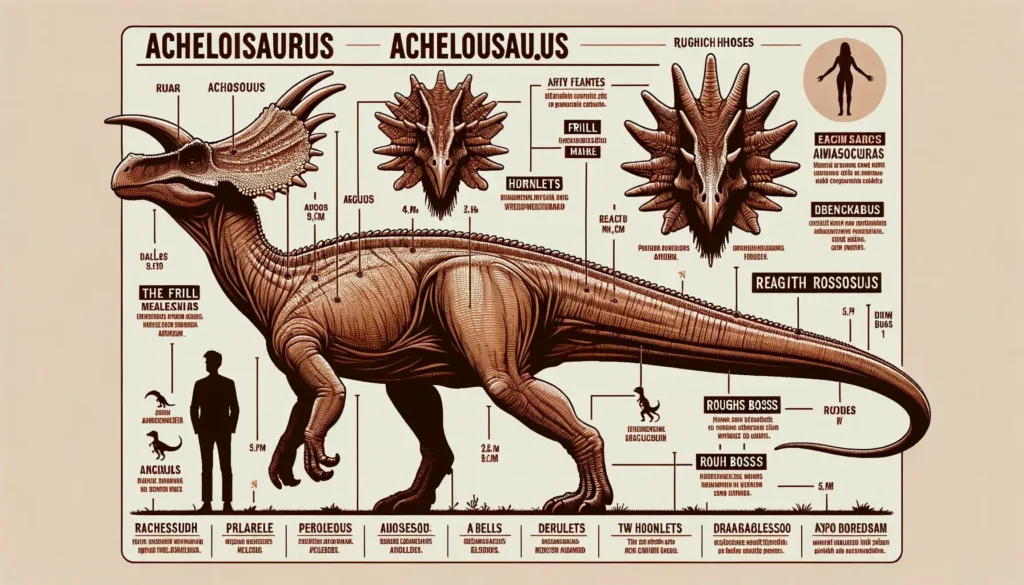
Interesting Facts
- Achelousaurus is related to some of the most famous dinosaurs, such as Triceratops and Styracosaurus, which belong to the same group of ceratopsians called ceratopsids.
- Achelousaurus lived in a diverse and rich ecosystem that included other ceratopsians, such as Einiosaurus and Pachyrhinosaurus, as well as theropods, such as Tyrannosaurus and Troodon.
- Achelousaurus is one of the few ceratopsians that have bosses, which are roundish protuberances on the skull. Bosses are more common in other groups of dinosaurs, such as stegosaurs and ankylosaurs.
- Achelousaurus may have lived up to 80 years old, based on the growth rings in its bones.
Related Dinosaurs
- Einiosaurus: A close relative of Achelousaurus that also had bosses and spikes on its skull, but with a forward-curved nasal horn and a shorter frill.
- Triceratops: A distant cousin of Achelousaurus that had the longest horns of any ceratopsian, as well as a short nose horn and a large frill.
- Styracosaurus: A primitive ceratopsian that had a long nose horn and a frill with six long spikes.

